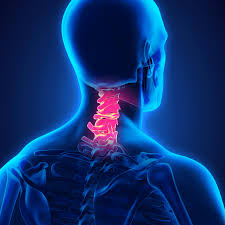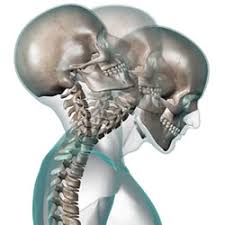

In today’s digital age, it’s hard to escape the influence of technology.
Whether we are checking emails on our smartphones, working long hours on computers, or binge-watching our favorite shows on tablets, our necks are constantly bent forward.
While this might seem like a harmless habit, recent research reveals a deeper, more alarming consequence: ligament creep and cervical instability.
A recent study has identified a condition called “CREEP”—the gradual stretching of cervical neck ligaments due to excessive neck bending.
This issue, primarily caused by prolonged use of devices, can result in severe health complications like chronic headaches, nerve-related symptoms, and even difficulty swallowing.
The study underscores the urgent need to maintain proper posture and avoid prolonged neck flexion to prevent these symptoms from developing or worsening.
But what exactly is ligament creep, and why should we be concerned?
Understanding Ligament Creep: The Slow Stretching of Neck Ligaments
Ligament creep is a term that describes the gradual elongation and weakening of ligaments due to sustained or repetitive stress.
Imagine a rubber band being stretched over and over again—it eventually loses its elasticity and strength. This same principle applies to our neck ligaments.
When we maintain a forward head posture for extended periods, such as looking down at our phones or leaning into our computer screens, the ligaments in our necks begin to stretch beyond their natural range.
This slow, continuous stretch compromises their ability to support the cervical spine, leading to a condition known as cervical instability.
Cervical instability occurs when the ligaments that support the neck lose their integrity, causing excessive movement between the vertebrae.
This can result in a cascade of symptoms, from chronic neck pain and tension headaches to more severe issues like brain fatigue, difficulty swallowing, and even problems with balance.
A study published in Caring Medical highlights how forward head posture increases the force exerted on the spine by an additional 10-12 pounds for every inch the head moves forward.
Over time, this extra pressure can cause significant damage to the cervical ligaments and surrounding structures.
The Vicious Cycle: How CREEP Leads to Cervical Instability
Once ligament creep sets in, it creates a vicious cycle. As the ligaments stretch and lose their ability to stabilize the neck, the muscles around the cervical spine have to work harder to compensate.
This can lead to muscle fatigue, spasms, and further imbalance in the neck’s structure. As a result, individuals may experience symptoms that seem unrelated to neck posture, such as headaches, tingling in the arms, and even digestive issues.
Moreover, as cervical instability worsens, the risk of developing more serious conditions increases.
According to a study published in the Journal of Clinical Medicine, there is a significant correlation between cervical instability and conditions like cervicogenic headaches and dizziness, which are directly linked to the abnormal movement of the cervical spine.
The Role of Technology in Worsening CREEP
Our reliance on technology has exacerbated the problem of ligament creep. Studies have shown that the average person spends more than seven hours a day looking at screens.
This often involves a forward head posture, where the head is thrust in front of the shoulders, creating a “text neck” phenomenon.
In fact, a 2014 study by Dr. Kenneth Hansraj found that tilting the head forward at a 15-degree angle can increase the effective weight on the neck to 27 pounds, and at 45 degrees, it can be as much as 60 pounds!
This repetitive stress not only affects the ligaments but also disrupts the alignment of the entire cervical spine.
Over time, it can lead to a loss of the natural cervical curve, known as cervical lordosis, and even result in the reversal of this curve, causing a condition called cervical kyphosis.
Such misalignments can put pressure on the spinal cord and nerves, leading to a range of neurological symptoms.
The Broader Health Implications of Cervical Instability
Cervical instability does not just cause neck pain. It can have far-reaching effects on overall health.
The vagus nerve, which runs through the neck, plays a crucial role in controlling the parasympathetic nervous system.
When the neck is misaligned, it can compress or irritate this nerve, leading to symptoms such as dizziness, difficulty swallowing, and even issues with heart rate and digestion.
Additionally, cervical instability has been linked to sleep apnea and TMJ disorders.
A study conducted by Verywell Health noted that forward head posture can narrow the airways, making it harder to breathe and increasing the risk of sleep apnea.
Similarly, the misalignment of the cervical spine can affect the position of the jaw, leading to TMJ disorders and chronic facial pain.
Preventing Ligament Creep: Practical Tips for Better Neck Health
Preventing ligament creep and the ensuing cervical instability requires proactive measures to maintain proper posture and neck health. Here are some practical tips:
- Maintain Proper Posture: Ensure that your head is aligned with your shoulders and that your screen is at eye level. Use a chair with good back support and keep your feet flat on the ground.
- Take Frequent Breaks: Avoid staying in one position for too long. Take a break every 30 minutes to stand up, stretch, and change your position.
- Strengthen Neck Muscles: Incorporate exercises that strengthen the muscles around the neck and upper back. This can help support the cervical spine and prevent ligament strain.
- Use Ergonomic Tools: Invest in ergonomic tools like a standing desk or an external monitor to reduce neck strain. Make sure your workstation is set up to promote a neutral neck position.
- Stay Active: Regular physical activity, including exercises that improve posture and strengthen the core, can help maintain the alignment of the cervical spine and reduce the risk of ligament creep.
Conclusion: Taking Action Against Cervical Instability
Cervical instability and ligament creep are often overlooked consequences of poor posture and excessive tech use.
However, by understanding the risks and taking best forward head posture fix methods, we can prevent these issues from developing or worsening.
Remember, small changes in your daily habits can make a significant difference in your long-term health.
References:


